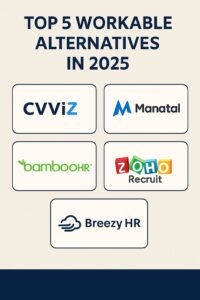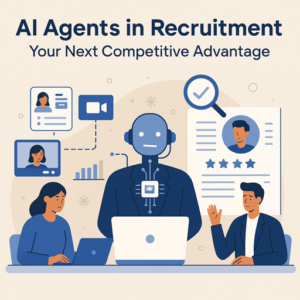How many times we have heard that employee referral is the best source of hire. Why companies must implement an employee referral program to hire the best talent. Also, like every year’s hiring statistics, 2018 stats also show that employee referral has been the number one source of hire. However, despite knowing the benefits of employee referral programs companies fail to implement successful employee referral programs.
Employee referral is probably the best candidate sourcing strategy. Companies generally pay out handsome cash bonuses for a successful referral. Despite big employee referral rewards companies fail to attract employee referrals. There are some common reasons because of which employee referral programs fail. Let’s look at these reasons.
Failing To Promote Employee Referral Program
Typically how it works in the companies is, HR or recruiter would send an employee referral mail about jobs that are open for employee referral. Or there will be an email that will ask employees to log in into an internal employee referral site to know which jobs are open for employee referrals. Unfortunately, this is not enough to promote employee referral programs.
Employee referral is the number one source of how people discover jobs. Candidates generally get to know about jobs in a given company on job boards or by social media ads. But, employees in a company are generally not aware of the jobs that are open for employee referrals. Lack of awareness about the employee referral program or not able to make it sound important is the most common reason why employee referral programs fail. This reason may sound trivial, but it is true.
Poor employee engagement is another reason why employee referral programs fail. For example, if your employee referral portal is not mobile compatible and mobile-optimized then your employees may not want to visit it often. Everyone spends more time on smartphones than most other devices. Having a referral portal easily available on smartphones or by having an employee referral app could significantly boost employee referrals.
Unable To Tap Into Employee’s Professional Network
Is your employee referral program able to tap into your employee’s professional network? Do you make it easy for your employees to remember or to find their friends who might be suitable for the jobs in your company?
You may ask how is the company responsible for tapping into its employees’ network. The tools company using internally for employee referral program should help employees to post these jobs easily on social media. It should make it easy for employees to invite their friends to have a look at the job posts.
Sometimes, employees are not comfortable broadcasting jobs of their company on social media. In such cases, the recruitment technology that the company is using should allow their employees to publish jobs in private.

Your Employee Is Not Your Fulltime Recruiter
Often long boring referral processes makes it less exciting for employees to refer their friends or acquaintances. Poor candidate experience is an important reason why employee referral programs fail. It is common that employees have to fill in too many details about their referral candidates. For example, an employee has to fill in details about previous work details about the candidate. Employees have to declare if the candidates they are referring are related to them. And many such other details.
In some employee referral programs, employees have to search for jobs for their friends from the portal and then figure out if their friends are a match or not. Sometimes employees are not sure if their friends are a good match and they just want to refer their friends. A company should not expect their employees to do matchmaking between jobs and candidates. Such poor experiences are a big turn off. Hence employees don’t find it exciting referring candidates despite good referring bonuses.
Asking For Recommendations Rather Than Referrals
The definition of employee referral has changed over the period. The employee referral process should be about asking your employees for an introduction to their friends and acquaintances. In earlier times, referrals were more about recommendations. It is like asking a question to your employees if they want to refer someone or recommend someone. The difference is, with recommendations, you add accountability. When you are asking your employees if they want to recommend someone then you are indirectly holding them accountable for their referrals.
Recommendations are good but they hold you accountable. If you only focus on recommendations, then you are actually shrinking your employee referral talent pool tenfolds. Take accountability out of the equation and focus on plain introductions to your employee’s network using employee referrals. This could help companies receive referral candidates in large numbers.
One of the few reasons why HR may shy away from employee referral program is the volume of applications they may receive and the time it would take for processing. Today, with AI-powered recruiting automation software companies can screen thousands of resumes in a few seconds.
Employee Referral Black Hole
Losing track of the referred candidate is very common. When employees refer candidates, employees never get to hear what is happening with those referred applications. They get to know only when their referred candidates are selected. It is frustrating for an employee when they are not able to track the progress of their preferred candidates. It is even more frustrating when they refer to their friends and not able to convey back.
One of the reasons for losing track of referral candidates is a manual employee referral process. This leads to the mixing of referral candidates with other job applicants. Too much of manual work with large volume will demotivate recruiters to leverage employee referrals. This adds to the reason why employee referral programs fail.
There are also occasions when employees refer their friends to a common pool where they may not be referred for a specific job. Such applications often lost for good and hence the term black hole!
Candidate applications you receive as part of the referral process should be given priority and preferential treatment. Stats have proven that the referred candidates turn out to be good performing employees who also stay longer with the firm. Hence, they should be contacted so that they know their job application is acknowledged.
Such poor experiences make employees believe that the employee referral process is not important and they do not take interest in referring candidates. This means that employee engagement is broken which is the primary reason why employee referral programs fail.
Lack Of Transparency Makes Employee Feel Cheated
Many a times confusion over referral bonus crops up. Sometimes a referral candidate may get selected for a different job than he or she was referred for. Or situations where an employee is told that the job was not part of the employee referral program. In such situations, companies may not pay their employees because of confusion.
When employees are not paid their referral bonuses they feel cheated. Lack of transparency is a rather serious reason why employee referral programs fail. Again this leads to loss of trust and reason why employees may not feel encouraged to refer to candidates.
Employee Referral Programs Fail Because Of Missing Engagements
Employee referral programs fail mostly because it fails to engage employees. It should be interactive and fun to refer to candidates. Employees should feel motivated and excited to refer to candidates. Giving out cash bonuses alone will not engage your employees. Human beings long for recognition. It longs for that feel good factor. Using gamification for employee referrals could be one of the ways to improve employee engagement. Small things like recognizing your employees for their referrals, letting them choose their rewards. Small changes like these could help you win big with your employee referral program.




